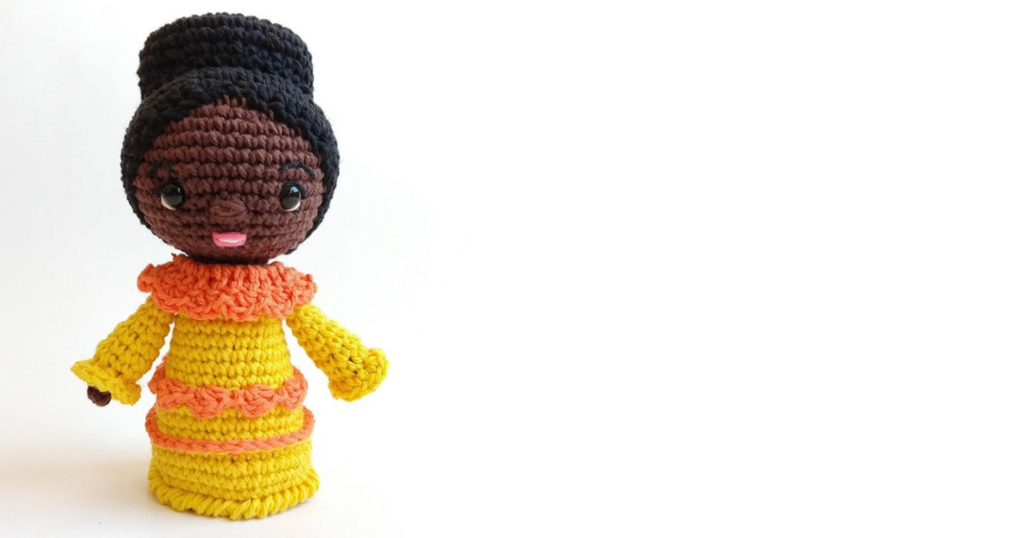
Fans of Chimamanda Ngozi Adichie may have heard that earlier this year, she gave a keynote speech at Chile’s Future Congress, an event that gathers notable thinkers to debate solutions like climate change and social inequality. Turns out that Adichie has fans all over Latin America — sometime in December 2019, we shared on our Instagram pictures of a crochet doll of Adichie handcrafted by Soledad, an Argentinian woman who has been crocheting for the past five years. The doll was part of a project with fellow crocheters to craft feminist icons, including Margaret Atwood.
To round off Women’s History Month, we’re publishing here an email interview we conducted with Soledad, whose Instagram handle is @ishtartejidos. We were particularly curious about the impetus for the project, and the popularity of Chimamanda Adichie in Latin America. The interview below has been lightly edited for clarity.
Brittle Paper
Tell us about yourself and the project of crocheting figures like Chimamanda Adichie and Margaret Atwood. Is there a name for the project? What inspired it? What are its goals, and/or the message you hope to convey?
Soledad
My name is Soledad, I’m Argentinian, and I’ve been crocheting toys and dolls for the last 5 years. During this time, I met Vero (on Instagram, she is @granada_boom), Jime (@lareina.delcrochet), Maru (@kuronekocrochet) and Flor (@magia.crochet). Last November [2019], my friends and I wanted to make an end of the year project all together, but we didn’t want it to be a classic Christmas project. We came up with the idea of making a Feminist Nativity Scene. We wanted our Femi María to be dressed in green because this was the color that, at least in Latin America, was chosen for the [legalizing] abortion campaign [see here for context]. A doula [midwife] doll is accompanying this Femi María, and instead of the Three Kings, we chose three women: Chimamanda, Margaret, and Susy Shock, a trans-woman, because we believe that transgender women must be included in the fight against the patriarchy.
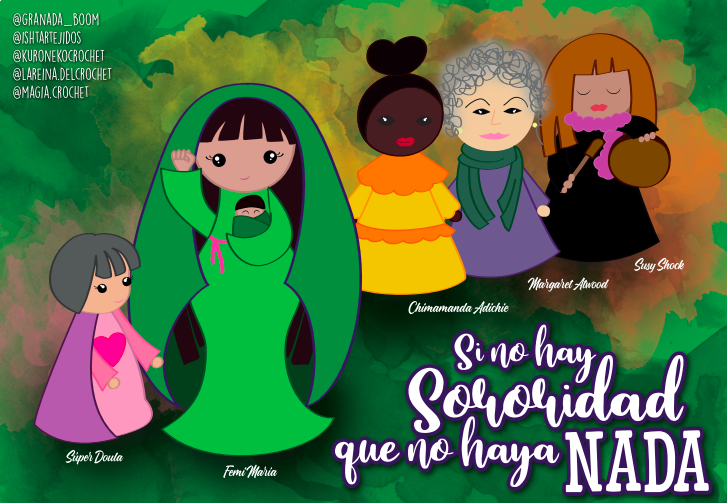
Brittle Paper
Why is it important to craft a feminist icon in doll form?
Soledad
We believe in crocheting as a tool to express our ideas. Vero has been crocheting feminist dolls for many years. She did, for example, a Juana Azurduy doll, a patriotic woman of our Independence, not remembered often, and Mothers of the Plaza de Mayo [dolls], the women who campaigned for their children who had been “disappeared” during the last military dictatorship. In 2019, with a group called “Teijiendo Feminismos” [loosely translated as Feminist Weavers], people from all [around] the country crocheted or knitted squares with the names of victims of feminicide embroidered to make visible the increase of this type of crime.
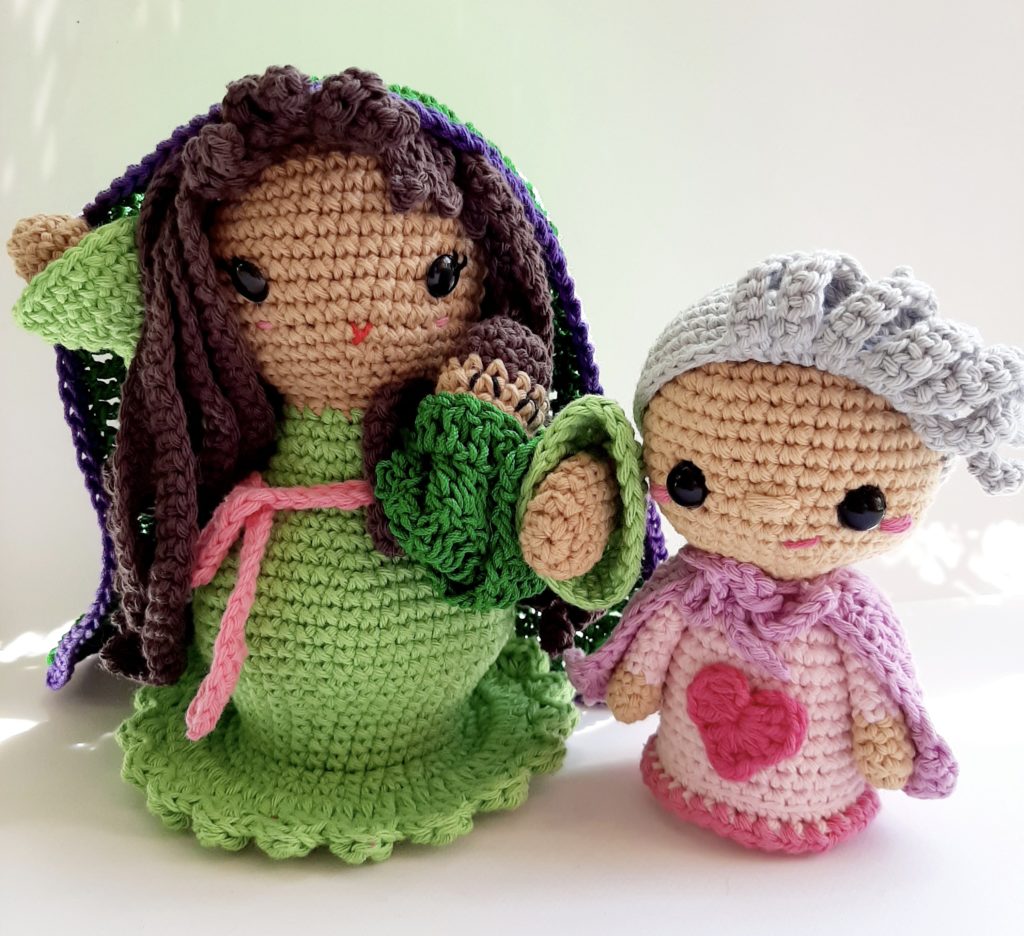
Brittle Paper
When most people see a doll like the Chimamanda Adichie one, the first word that usually comes to mind is “cute.” We also normally associate dolls, especially small ones, with “cuteness.” Is “cuteness” a quality that you think will help toward achieving the project’s goals? If so, how?
Soledad
I think the cuteness helped to draw attention to the project. Those who heard about the project were interested in the figures we wanted to represent and in the messages that these women transmit.
Brittle Paper
Why did you specifically choose to crochet a figurine of Chimamanda Adichie? And why did the other participants of the project choose to crochet their respective figures?
Soledad
With Chimamanda, we wanted to spread her thoughts about gender roles. In Latin America, there is a movement called “Hombres Tejedores” (Knitting Men) that seek to make visible that men also can knit or crochet and this type of craft is not only for women. Knitting or crochet in our continent is mistakenly seen as a hobby or a [kind of] work just for women.
Susy Shock was chosen because we are convinced that feminism is not possible if we don’t include transwomen. This minority in South America faces discrimination, and this usually forces them to be sex workers for survival. The risks that transwomen experience are high, and their life expectancy does not [usually] exceed 40 years.

Brittle Paper
Is Chimamanda Adichie widely seen as a feminist role model in Argentina and elsewhere in Latin America? If so, why do you think that is?
Soledad
The first time I heard about Chimamanda was in 2017. A Spanish bookgrammer reviewed Dear Ijeawele and We Should All be Feminists, but at that time Chimamanda’s books weren’t available in Argentinian bookshops. Today, two years later, her books are easily found, but I don’t know if she is widely known as a feminist role model.
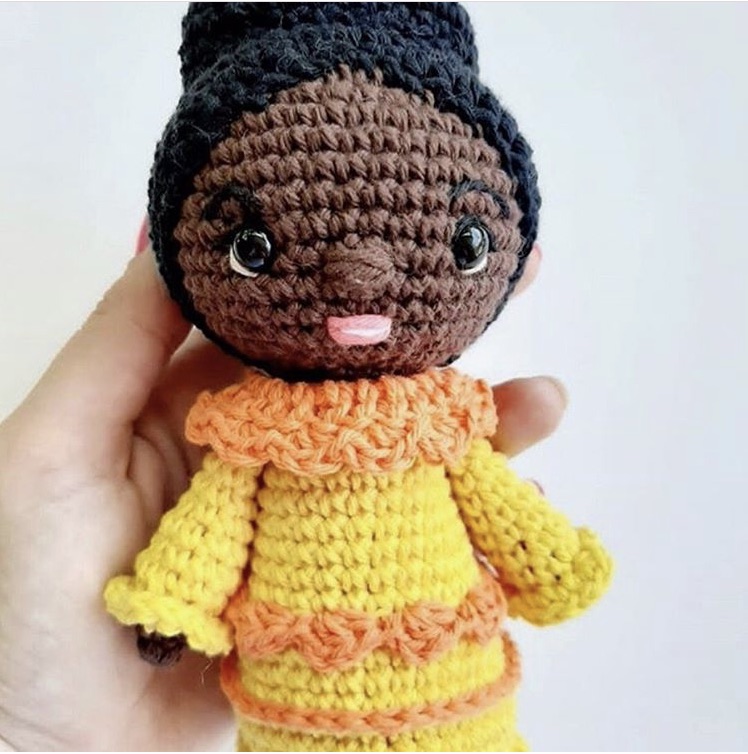
Brittle Paper
Do you have plans to make figurines of other inspiring feminist icons, particularly icons from the African cultural and literary scene?
Soledad
At the moment I don’t have it planned, but I won’t dismiss the possibility.
Brittle Paper
Will the Chimamanda Adichie doll be made widely available for purchase or order, or is it a one-off project?
Soledad
Right now I’m working to translate my patterns into English, and the pattern to crochet the Chimamanda doll is one of them. I hope they’ll be available soon.
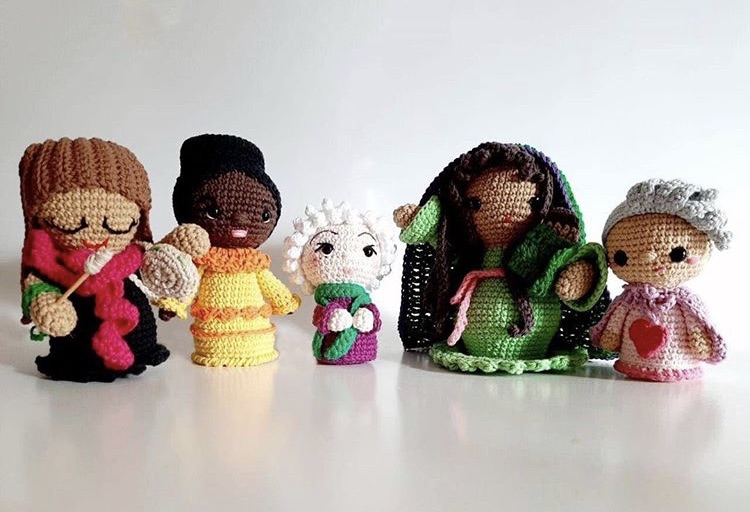
Many thanks to Soledad for telling us about her project, and we hope, like her, that the pattern for the Chimamanda doll will be available soon!


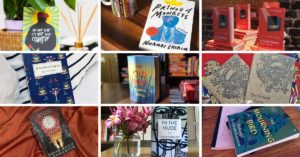



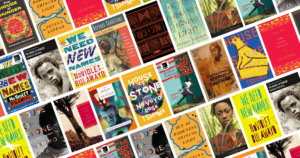

COMMENTS -
Reader Interactions